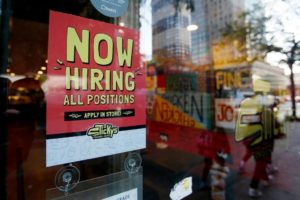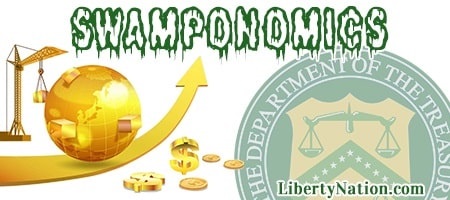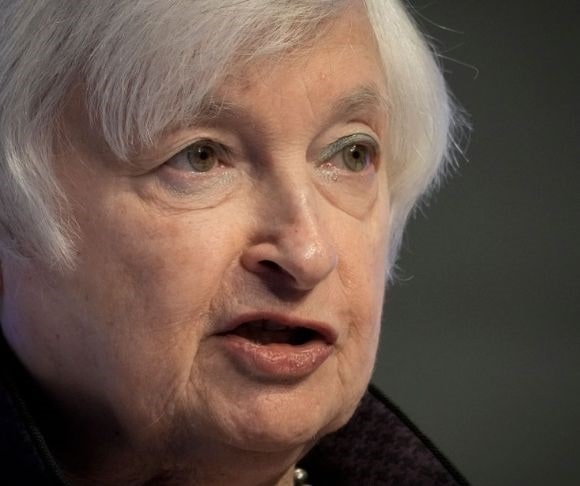The reason price inflation reached a 40-year high is not that the federal government approved trillions in deficit-financed spending or that the Federal Reserve is printing trillions more. The consumer price index (CPI) is running north of 7% because of you and your “splurging” ways. This is what Treasury Secretary Janet Yellen recently told propagandist and alleged funny man Stephen Colbert. But is there any truth to this claim? Like everything else from President Joe Biden’s administration, there is a kernel of truth in the haystack of economics.
Blame Americans for Inflation
 Speaking on The Late Show with Stephen Colbert, the host asked how price inflation got out of hand when “two years ago everything seemed fine,” adding that White House officials dismissed soaring prices as a “small risk.” Yellen’s response was that Biden managed the coronavirus pandemic so well that consumer confidence was through the roof, enabling them to “splurge” on goods.
Speaking on The Late Show with Stephen Colbert, the host asked how price inflation got out of hand when “two years ago everything seemed fine,” adding that White House officials dismissed soaring prices as a “small risk.” Yellen’s response was that Biden managed the coronavirus pandemic so well that consumer confidence was through the roof, enabling them to “splurge” on goods.
“It turned out the pandemic had very special impacts on the economy. Remember, everybody stopped spending on services,” she said. “They were in their homes for a year or more, they wanted to buy grills and office furniture, they were working from home, they suddenly started splurging on goods, buying technology.”
She was quiet about the $2.1 trillion CARES Act and the $1.9 trillion American Rescue Plan (ARP), as well as the central bank pumping the financial system with 40% of all US dollars ever created. Instead, she blamed the American people, which is, of course, only partly true. But consumer spending spiked due to handing out free money to households nationwide, from stimulus checks to sweetened unemployment benefits. It is analogous to a kindergarten teacher handing out cans of Coca-Cola and chocolate chip cookies and then leaving the room only to find the kids running around and destroying the classroom upon his or her return.
Ultimately, though, the administration got it entirely wrong on the inflation front. Everyone – from President Biden to Yellen to White House Chief of Staff Ron Klain to former Press Secretary Jen Psaki – claimed that inflation would not even occur and dismissed it as a problem for only wealthy Americans. Even leftists, be it economists or journalists, argued that the cost of living would not spike under the Bidenomics doctrine. Two years later, it turns out this was nonsense. Of course, now that inflation has peaked and is gradually easing, thanks to easing money-supply growth and market forces, the administration will take full credit for the CPI eventually sliding to the 2% target. C’mon, man!
November Jobs Report

(Photo by Leonardo Munoz/VIEWpress)
What the heck is happening in the US labor market? Everyone is about as confused a transcriptionist for one of Biden’s speeches. According to the Bureau of Labor Statistics (BLS), the economy added 263,000 new jobs in November, higher than the market forecast of 200,000. The unemployment rate was unchanged at 3.7%, while average hourly earnings climbed 5.1% year-over-year to $32.82. The labor force participation rate slid to 62.1%.
Leisure and hospitality added 80,000 positions, followed by health care (+45,000), government (+42,000), and construction (+20,000). The retail and transportation and warehousing sectors lost a combined 45,000 jobs. Meanwhile, the number of people working two or more jobs increased to 7.7 million, and the number of Americans who are not in the labor force but want a job clocked in at 5.6 million, above the pre-pandemic level.
Like every other monthly employment snapshot since the spring, this was surprising because economists and market analysts have been penciling in slowing growth amid a tightening Federal Reserve. Plus, other metrics released over the past week support this position.
The ADP National Employment Report reported that the private sector created 127,000 jobs last month, with manufacturing losing 100,000 positions. In addition, data from Challenger, Gray & Christmas, Inc. found that US-based employers eliminated close to 77,000 positions, the highest reading since January 2021. Department of Labor figures show that continuing jobless claims advanced to an eight-month high of 1.608 million.
In economics, observers generally allow six months for a significant public policy decision to seep into the broader economy. It has been eight months since the US central bank launched its inflation-busting tightening campaign. So, perhaps the start of 2023 is when there will be a dramatic slowdown and maybe even drop in payrolls. Remember, this is the aim of Jerome Powell and Co. – and you never bet against the Fed!
Recession Hits Manufacturing
 Despite President Biden celebrating his record on the manufacturing sector, it turns out that it is pretty abysmal, especially after the latest finding that the industry has slipped into a recession. The Institute of Supply Management’s Manufacturing Purchasing Managers’ Index (PMI) fell to 49 in November, down from 50.2 in October. This was also worse than economists’ expectations of 49.8. The drop was driven by sliding employment levels and new orders, although prices eased. And this was not the only measurement to confirm that the dreaded R-word has targeted manufacturing.
Despite President Biden celebrating his record on the manufacturing sector, it turns out that it is pretty abysmal, especially after the latest finding that the industry has slipped into a recession. The Institute of Supply Management’s Manufacturing Purchasing Managers’ Index (PMI) fell to 49 in November, down from 50.2 in October. This was also worse than economists’ expectations of 49.8. The drop was driven by sliding employment levels and new orders, although prices eased. And this was not the only measurement to confirm that the dreaded R-word has targeted manufacturing.
The S&P Global Manufacturing PMI tumbled to 47.7 in November, down from 50.4 in the previous month. This was the first contraction reading since June 2020, driven by declines in new orders, output, employment, demand, and business sentiment. The positive news was that supply chains improved, and input costs rose at the slowest pace in two years. But that’s about it.
Here is what Chris Williamson, the chief business economist at S&P Global Market Intelligence, had to say:
“Note that the worsening global trade picture from the PMI survey comes despite signs of supplier delivery times easing, a result of fewer global supply chain delays. While these improvements in supply conditions appear to have helped temporarily lift global shipping volumes, the PMI survey warns than new orders placed for exports around the world are falling sharply, which is expected to translate into lower shipping volumes in coming months.”
So, the manufacturing and housing sectors are in a recession, tech is repeating the dot-com bubble again, and stocks are still in a bear market. So, how is this a strong economy again? Oh, yeah: Consumers are relying on debt to keep their heads above water as inflation decimates household finances. This is a signal of economic growth, right? Right?!




